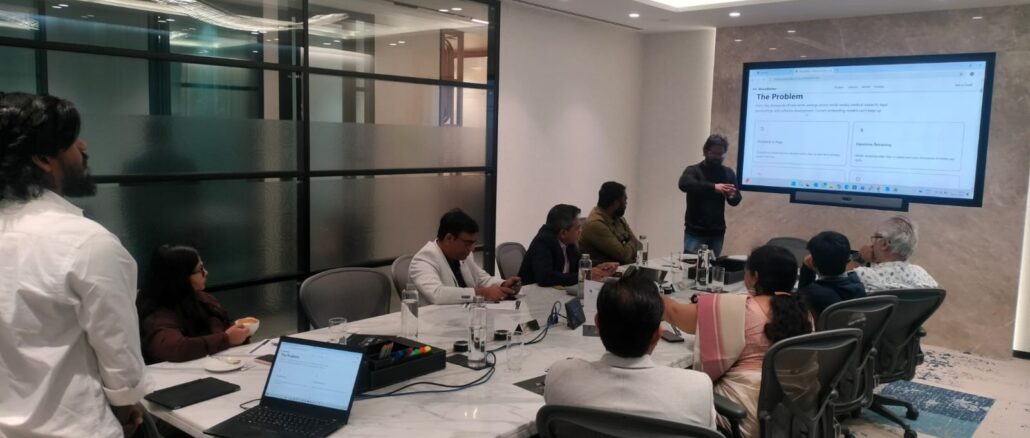
Social media has become deeply woven into our everyday lives—whether it’s staying in touch with friends, building a brand, running a business, or showcasing your work. But with this convenience comes a growing risk: hackers and scammers are constantly looking for new ways to break into accounts, steal information, and misuse online identities.
Keeping your digital presence safe isn’t complicated, but it does require awareness and a few smart habits. This guide breaks down the most effective, easy-to-follow steps to help you protect your social media accounts in 2025.
Why Securing Your Social Media Matters More Than Ever
Your profiles hold more information than you might think—photos, contact details, conversations, location history, payment details, and sometimes even work-related data. If someone gains access to your accounts, they can:
-
Lock you out
-
Pretend to be you
-
Scam your friends and followers
-
Access linked apps or email
-
Damage your personal or professional image
A few precautionary steps can completely change how safe you are online.
1. Create Strong, Unique Passwords
Weak or reused passwords are the easiest way for attackers to get in. A strong password acts as your first line of defense.
What makes a good password?
-
At least 12–16 characters
-
A mix of letters, numbers, and symbols
-
Not based on birthdays, names, or predictable words
If remembering too many complex passwords feels overwhelming, use a password manager like Bitwarden or 1Password. They generate and store everything securely so you don’t have to.
2. Turn On Two-Factor Authentication (2FA)
2FA adds a verification step beyond your password, making it far harder for anyone to break in.
Best ways to use 2FA:
-
Authenticator apps (Google Authenticator, Authy, Microsoft Authenticator)
-
Hardware security keys like YubiKey
-
Biometric methods like fingerprint or face unlock
While SMS verification is better than nothing, it can be vulnerable to SIM-swap attacks—so authenticator apps are a safer choice.
3. Secure the Email Linked to Your Social Media
Your email account is the master key to all your platforms. If someone hacks your email, they can reset your social passwords in minutes.
Strengthen your email by:
-
Enabling 2FA
-
Using a unique, strong password
-
Removing old recovery emails or unknown phone numbers
-
Checking for unfamiliar login devices
4. Keep an Eye on Privacy Settings
Social media platforms update their privacy controls often. Reviewing them regularly ensures you’re sharing only what you intend to share.
Adjust settings to:
-
Control who can see your posts
-
Limit who can message or follow you
-
Hide sensitive details like your phone number
-
Turn off facial recognition
-
Reduce unnecessary data collected for ads
5. Stay Alert for Phishing Attempts
Phishing is one of the most common ways accounts get hijacked. Cybercriminals use fake links or messages to steal your credentials.
Red flags include:
-
“Your account will be deleted” warnings
-
Messages asking you to click unknown links
-
Fake giveaways
-
Login alerts that don’t match your activity
When in doubt, go directly to the official app or website instead of clicking anything.
6. Log Out From Devices You Don’t Use
Staying logged in on shared computers, public devices, or old phones is risky.
Check:
-
Active devices in your account settings
-
Sessions you don’t recognize
-
Log out from all devices if you feel unsure
7. Avoid Public Wi-Fi for Logging In
Public Wi-Fi can expose your data to cybercriminals who can intercept what you’re typing.
To stay safe:
-
Don’t log in to social accounts on public Wi-Fi
-
Use a VPN when necessary
-
Prefer your phone’s mobile data
8. Review Third-Party App Access
Sometimes we connect apps to our social accounts without realizing the permissions we’re granting. Some of these apps may become outdated or insecure over time.
What to do:
-
Go to the “Apps & Websites” section in each platform
-
Remove apps you don’t recognize
-
Disconnect apps you no longer use
9. Keep Your Apps and Devices Updated
Updates aren’t just about new features—they often fix security vulnerabilities.
Make sure to update:
-
Social media apps
-
Your phone’s operating system
-
Browsers
-
Antivirus or security apps
Enabling automatic updates is the simplest way to stay protected.
10. Turn On Security Alerts
Apps like Facebook, Instagram, and Google allow you to monitor login locations, new devices, and suspicious activity.
Check regularly for:
-
Unknown devices
-
Login attempts from unusual locations
-
Password reset notifications
If something looks odd, change your password immediately.
11. Share Less Sensitive Information
Oversharing can unintentionally give hackers clues about your passwords or identity.
Avoid posting:
-
Your address or phone number
-
Travel plans in real time
-
High-value purchases
-
Personal identification details
Think twice before revealing too much.
12. Educate the People Around You
Security is a team effort. Whether it’s family members or employees, helping them adopt safer habits reduces risks for everyone.
Teach them to:
-
Recognize suspicious messages
-
Use strong passwords
-
Avoid clicking unknown links
-
Report unusual activity
13. Back Up Your Social Media Data
Most platforms allow you to download your profile information, photos, messages, and posts. It’s useful for recovery if anything goes wrong.
14. Extra Steps for Businesses
Managing multiple social accounts requires even more caution.
Businesses should:
-
Use role-based access instead of sharing passwords
-
Keep track of who has admin permissions
-
Use secure scheduling and monitoring tools
-
Review account activity regularly
Final Thoughts: Stay One Step Ahead
Securing your social media accounts isn’t complicated—you just need consistent habits and awareness. Cyber threats are becoming smarter every year, but so are the tools available to protect yourself.
By using strong passwords, enabling two-factor authentication, tightening privacy settings, and staying alert for suspicious activity, you can keep your online identity safe and secure in 2025 and beyond.

